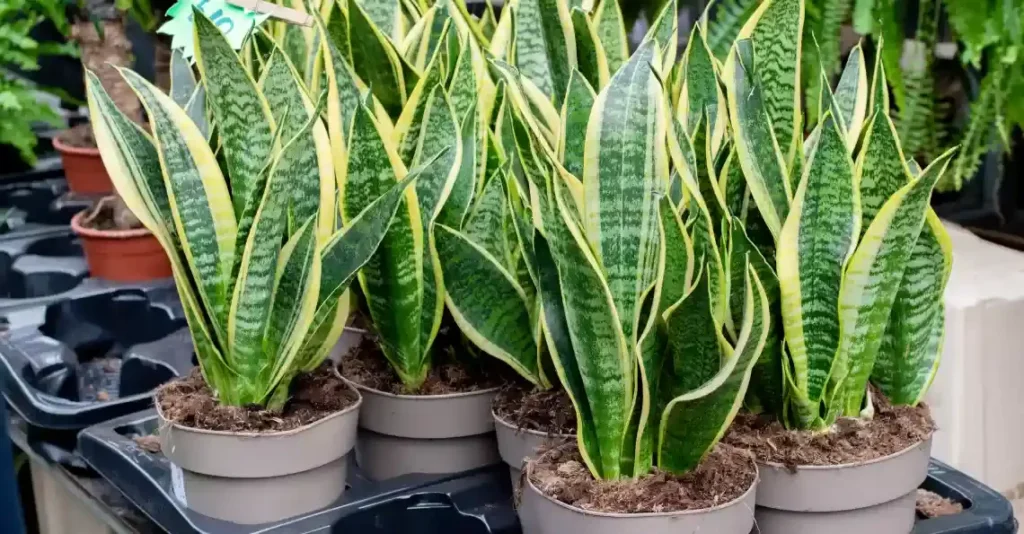The snake plant, often termed the “houseplant for beginners,” has gained popularity due to its low-maintenance nature. Yet, one question that frequently pops up among garden enthusiasts and homeowners alike is, how to trim snake plant for optimum health? This ultimate guide provides you with a comprehensive answer, covering everything you need to know to keep your snake plant thriving.
Why Trimming Matters
Trimming isn’t merely a cosmetic step; it’s a vital aspect of plant care. Overgrown leaves can turn into breeding grounds for pests and diseases. Moreover, a well-trimmed snake plant allows for better air circulation and light penetration, which in turn promotes healthy growth.
What is a Snake Plant?
Before diving into the steps on how to trim snake plant, it’s crucial to understand what a snake plant is and why it deserves a place in your home or garden.
Types of Snake Plants
There are about 70 different species of snake plants, each with unique features. The most common types include Sansevieria trifasciata, Sansevieria cylindrica, and Sansevieria stuckyi. Knowing the specific type of snake plant you own can help you tailor your trimming techniques.
Benefits of Having a Snake Plant
Apart from their aesthetic appeal, snake plants are excellent air purifiers. They convert CO2 into oxygen even at night, unlike most plants which only perform photosynthesis during the day. This makes them an excellent addition to bedrooms for a fresh oxygen supply around the clock.
How to Trim Snake Plant: Getting Started
Like any other project, preparation is key. Knowing what tools you need and the ideal conditions for trimming will set you on the path to success.
Essential Tools
To trim your snake plant effectively, you’ll need a pair of sharp, sanitized scissors or pruning shears, gloves, and a clean workspace. Keeping your tools sanitized will prevent the spread of disease and pests.
Ideal Conditions for Trimming
The best time to trim your snake plant is during its growing season, which is usually spring through early autumn. Trimming during this period promotes faster healing and minimizes stress to the plant.
The Trimming Process
Preparing the Plant
Firstly, inspect your snake plant thoroughly for dead or damaged leaves and stems. These are the parts that will need to be trimmed first. Position your plant in a well-lit area to get a good view of what you’re doing.
The Right Cutting Technique
When it comes to how to trim snake plant, the technique matters. Cut the leaves at a 45-degree angle close to the soil line. Be mindful not to damage adjacent leaves or stems in the process. Take your time and trim one leaf at a time.
Post-Trimming Care
Watering
After you’ve trimmed your snake plant, water it sparingly. Overwatering can lead to root rot, especially when the plant is still healing from the trim.
Fertilizing
Use a balanced, slow-release fertilizer about a week after trimming. This helps to replenish nutrients and encourages new growth.
Mistakes to Avoid
Over-Trimming
Don’t get scissor-happy; excessive trimming can stress the plant and stunt its growth. Always aim to remove only the damaged or dead leaves and stems.
Wrong Tools
Using dull or dirty tools can infect your plant and make the cuts uneven. Always ensure that your tools are clean and sharp before you start trimming.
Health Benefits of a Well-Trimmed Snake Plant

Improved Air Quality
A well-trimmed snake plant can absorb toxins like formaldehyde and benzene more efficiently, contributing to a healthier indoor environment.
Enhanced Growth
Regular trimming encourages new growth and may even result in your snake plant producing offsets, or “pups,” that can be propagated to create new plants.
Costs Involved
DIY vs Professional Trimming
While you can easily trim a snake plant yourself, professional services are available for those who are unsure about the process. These services might include plant analysis and the use of specialized tools, but they also come at a cost.
Children and Pets: Safety Measures
Is the Snake Plant Safe?
While generally not toxic, some people and pets can have a mild allergic reaction to snake plants. Always exercise caution when placing your trimmed plant in an area accessible to children or pets.
Keeping the Trimming Tools Safe
Always store your trimming tools in a secure location out of reach from children and pets to prevent accidents.
FAQs
Is it necessary to trim a snake plant?
It is not strictly necessary, but regular trimming helps maintain the plant’s health and appearance.
How often should you trim your snake plant?
Generally, snake plants should be trimmed once or twice a year, usually during their growing season.
Can a badly trimmed snake plant recover?
Yes, snake plants are resilient and can recover from a bad trim, although it may take some time.
What’s the best season for trimming snake plants?
The best season is during the growing season, typically from spring to early autumn.
Is a snake plant an indoor or outdoor plant?
Snake plants are versatile and can thrive both indoors and outdoors, although they are most commonly kept as indoor plants.
What to do with the trimmed parts?
The trimmed leaves can be used for propagation or discarded. If the leaves are diseased, it’s best to dispose of them immediately.
Conclusion
Final Thoughts on How to Trim Snake Plant
Learning how to trim snake plant is not just about maintaining its aesthetic appeal; it’s about ensuring its overall health and vitality. With the right tools, technique, and timing, you can make your snake plant a centerpiece of beauty and health.



